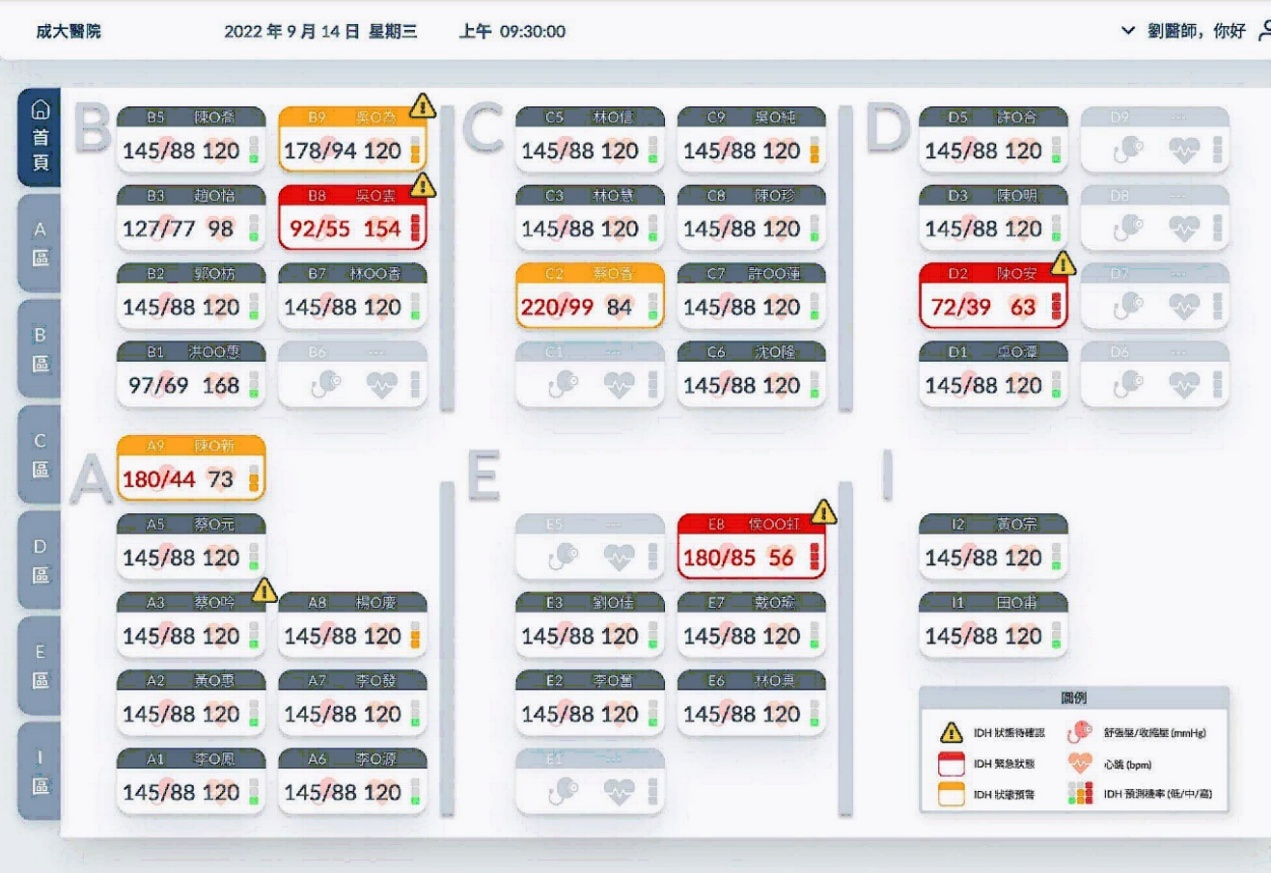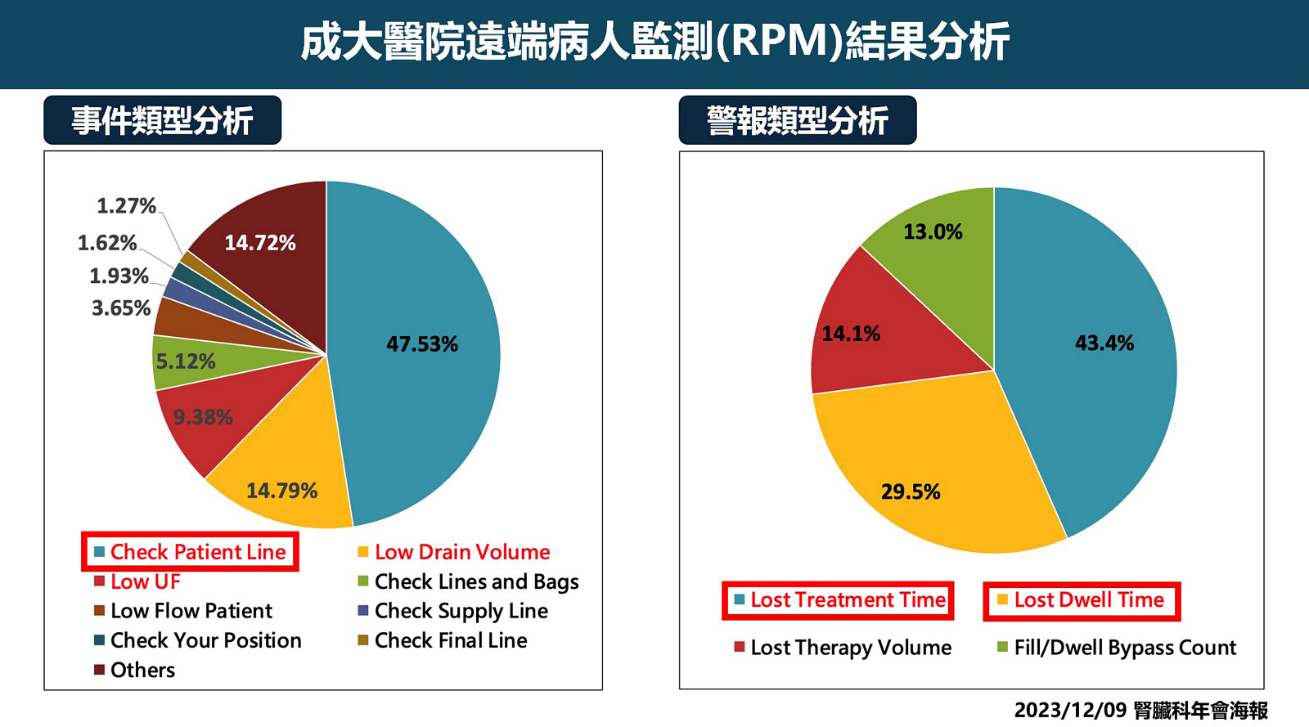Smart Hemodialysis Platform and Remote Peritoneal Dialysis Monitoring
Chin-Chung Tseng, Director, Dept. of Internal Medicine of Nephrology
Smart Hemodialysis Platform: Enhancing Patient Care with AI and Big Data
Complications such as intradialytic hypotension (IDH) or shock remain significant challenges in hemodialysis treatment. To address these risks, the Nephrology Department at National Cheng Kung University Hospital (NCKUH) collaborated with interdisciplinary research teams to develop the Smart Hemodialysis Platform. This innovative system integrates artificial intelligence (AI) deep learning with big data analytics, enabling personalized risk prediction for patients and effectively preventing dialysis-induced complications such as hypotension.
The Smart Hemodialysis Platform includes the following core features:
1. Real-time prediction and alerts: Continuous patient monitoring with automated alerts, enabling early intervention.
2. Intuitive user interface: A visualized dialysis bed map and real-time vital sign display help medical staff quickly identify high-risk patients and optimize resource allocation.
3. Comprehensive data integration: Consolidating extensive patient data to enhance the accuracy of AI-driven predictions (Figure 1).
Clinical testing has shown that the platform achieves prediction accuracy (AUROC: 0.91) and recall rate (0.88) comparable to the diagnostic capabilities of experienced specialists. The platform has also been recognized with national innovation and quality awards. Looking ahead, NCKUH plans to expand the platform to more dialysis units, with continuous clinical research to refine AI models and establish a benchmark for smart dialysis care.
Remote Peritoneal Dialysis Monitoring: Advancing Smart Healthcare with Data-Driven Insights
For peritoneal dialysis patients, real-time remote monitoring is essential for reducing treatment complications. NCKUH has implemented the Sharesource Remote Patient Monitoring (RPM) to enhance patient management. This cutting-edge tool enables continuous monitoring of patient conditions and automatically generates alerts for abnormal trends. This allows medical teams to intervene proactively, helping to reduce risks of technique failure and peritonitis (PD-associated peritonitis).
Studies conducted at NCKUH have revealed that patients with frequent alerts face significantly higher risks of technique failure and peritonitis than those with fewer alerts. These findings highlight the role of the RPM system as a crucial early intervention tool. The research results were presented at the Annual Nephrology Society Conference (Figure 2).
Looking forward, NCKUH aims to conduct in-depth analyses of different alert types to optimize the alert thresholds further, enhancing accuracy and usability. These efforts will improve the quality of life for peritoneal dialysis patients and contribute to the broader adoption of smart healthcare technologies in clinical practice.

Figure 1. Smart Hemodialysis Platform: A screenshot of the platform's interface showing dialysis patients' bed distribution and real-time vital signs data. The platform is equipped to predict the risk of dialysis shock, which helps the healthcare team quickly identify high-risk patients through an intuitive visualization design.

